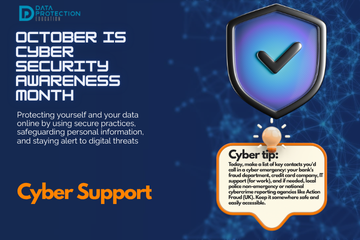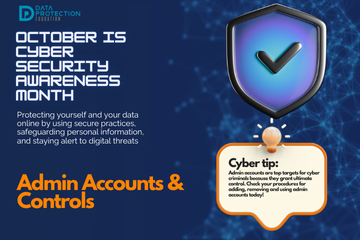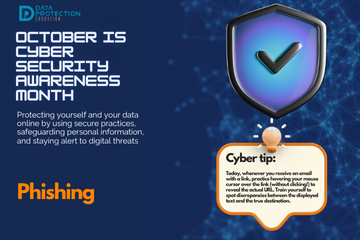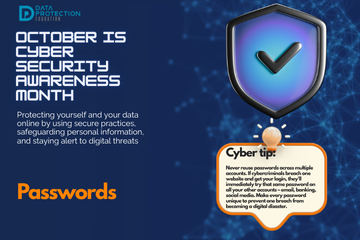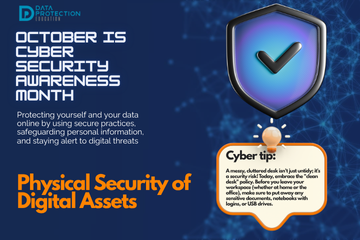We're sharing some small snippets over Christmas to share with staff. Please feel free to share the link to this short news article or follow us over on our social media channels where we share additional help and advice - we'd love to see you there!
InfoSec / Cyber
The DfE Technology in Schools survey: 2024 to 2025 was published this week. We give our views on the results:
Several London councils are believed to have been targeted in cyber attacks within the past few days, including Hammersmith, who were previously attacked in 2020.
The government has announced an additional Digital Standard to help with planning, commissioning and reviewing their IT support services. The services can be internal, external or a hybrid. Effective IT support is essential for maintaining technology, planning improvements and mitigating risks like outages and cyber incidents, and sits alongside the other 11 standards.
As Cyber Security Awareness Month draws to a close, it's important to recognise that cybersecurity isn't a destination; it's a continuous journey. For organisations, particularly those in the education sector, this journey often involves working towards recognised standards and certifications. In the UK, Cyber Essentials and Cyber Essentials Plus are government-backed schemes designed to help organisations protect themselves against common cyber threats. For schools, the Department for Educat
Understanding where to get help for cyber resilience and in the event of a cyber attack is crucial for both individuals and organisations. The good news is that there is help and guidance available!
Administrator accounts (often called "privileged accounts") are the most powerful and, so, the most sought-after targets for cybercriminals. These accounts hold the "keys to the kingdom," possessing extensive permissions to configure systems, access sensitive data, manage users, and make critical changes across an entire network or application. A single compromised admin account can lead to a catastrophic data breach, widespread system paralysis, or complete organisational takeover by attacke
Phishing remains one of the most prevalent and effective cyberattack methods, tricking millions into compromising their data every year. These deceptive messages, often arriving via email, text message (smishing), or phone call (vishing), are designed to look legitimate. They aim to trick you into revealing sensitive information like login credentials, credit card numbers, or personal data, or to click on malicious links that install malware. They may also be the start of a more complex
Your password is your first, and often most critical, line of defence. Yet, far too many people still rely on easily guessable combinations like "123456" or "password," leaving their digital lives wide open to attack. Cybercriminals use sophisticated tools to crack weak passwords in seconds, and is one of the easiest forms of attack - low risk.
It's easy to overlook the importance of physical security when we rely so heavily on digital systems, but it's a critical component of overall cyber security. This means protecting your devices and data from unauthorised physical access. For individuals, it's locking your laptop when you step away, securing your home network equipment, and shredding sensitive documents. For organisations, it includes controlled access to offices and server rooms, securing hardware (laptops, USB drives), and m
For most organisations, servers are the undisputed backbone of their IT infrastructure. They house critical applications, store vast amounts of sensitive data (customer information, intellectual property, financial records), and power essential services. Consequently, servers are prime targets for cyber attackers, making robust server security an absolute necessity, not an option. A compromise of even one critical server can bring an entire operation to its knees.
Regular backups are the most fundamental and vital cyber security practices; they are your indispensable recovery safety net, ensuring that even if disaster strikes, valuable data can be restored.
- October 23. Filtering and Monitoring
- October 22. Hardware: Printers
- October 21. Hardware: Asset Management
- October 20. Hardware: Safe disposal
- October 19. Anti-virus/anti-malware
- October 18. Regular Updates: Patching Against Threats
- October 17. Access Control: Managing User Privileges
- October 16. Access Control: Securing Your Digital Gateways (Wi-Fi & Networks)
- October 15. Access Control: Securing Your Home Office (Working From Home)
- October 14. Access Control : (Multi-factor authentication)
- October 13. Cyber Security Awareness
- October 12. Training: Empowering your human firewall
- October 11. Policies and Procedures: Cyber Blueprint
- October 10. Understanding Your Cyber Posture
- Time's Ticking: Windows 10 support ends in October 2025!
- October 9. A Guide for Education Providers
- October 8. How Can Your Organisation Prevent Ransomware Attacks?
- October 7: Under Attack: The Reality of Ransomware
- October 6: Cyber Action Plan and A Roadmap to Resilience
- October 5: Cyber Responsibilities - We're All in This Together
- October 4: When a Cyber Attack Hits
- October 3: Data Security, the Core of Protection
- October 2: Privacy Protection & Safeguarding Personal Data
- October 1: Welcome to Cyber Security Awareness Month!
- Nursery Cyber attack
- The NCSC Cyber Assessment Framework
- The Classroom's Dark Side: Cyber crime from the Classroom
- The Latest Cyber Threat: The "Murky Panda"
- Holiday Cheer or Cyber Fear? : Essential Pre-holiday Checks
- Social engineering + impersonation = Fraud ≡ cyber deception
- School cyber attack: Framlingham College, Suffolk
- Getting caught in the Scattered Spider web
- A Wake-Up Call for Cyber Vigilance - Danger in the Threat Landscape for Everyone
- World Password Day
- Apple removes its highest level data security tool from UK customers
- The role of Passkeys in Cyber Resilience and Cyber Security
- Ransomware-Resistant Backups
- Effectively communicating during a cyber incident
- Safeguarding Identity in Microsoft 365: Protecting the UK Education Sector Against Cyber Threats
- How does the recent global IT outage affect me?
- King's speech introduces new bills in relation to cyber security, smart data and digital information
- What's a Cyber Incident and what should we do?
- Free short cyber training for staff
- Children's mental health data leaked after a cyber attack
- Cyber Incident Review: The Benefits
- Cyber attack on a University
- Kent Councils Data Breach
- Phishing attacks targeting schools - alert from City of London Police
- Update on Advisory for Rhysida Ransomware
- The Crime in a Cyber Attack and a Data Breach
- NCSC Annual Review is published for 2023
- Learning from Data Breaches
- Windows 11 security ineffective against attacks on old devices
- International Counter Ransomware Initiative 2023 Joint Statement
- Resistant Cloud Backups
- Top Ten Cyber Security Misconfigurations
- ICO Reprimand: company suffered a ransomware attack
- The UK Online Safety Bill becomes an Act (Law)
- The importance of software updates (PaperCut vulnerability and Rhysida ransomware)
- Ransomware, extortion and the cyber crime ecosystem
- Cyber Resource: The Cyber Resilience Centre Group
- Email and Security: ICO recent guidance
- What to do in the event of a Cyber Attack
- Cyber Crime: AI Generated Phishing Attacks
- Cyber Attack: Exam Boards
- VICE SOCIETY - Ransomware attacks on schools
- Be Cyber Aware: USB Sticks
- Cyber Insurance in the Public Sector
- Types of Cyber Attacks: DDos Attack (Microsoft DDoS Attack in June)
- Cyber Attack: Manchester University
- Cyber Attack: Leytonstone School
- Be Cyber Aware: Firewalls
- Be Cyber Aware: Cyber attacks and transparency. A no blame culture
- Cyber Attack: Dorchester School
- Types of Cyber Attacks: Password Attacks
- Be Cyber Aware: Why regular software updates are important
- Cyber Attack: Wiltshire School
- Keeping your IT systems safe and secure
- Why we recommend using PIN codes on printers
- Types of Cyber Attacks: DDoS Attacks
- Types of Cyber Attacks: Phishing
- Types of Cyber Attacks: The Insider Threat
- Why your data is profitable to cyber criminals
- Types of malware and how they are linked to data protection
- A guide to multi-factor authentication
- How a school fought back after a cyberattack
- Types of Cyber Attacks - Credential Stuffing
- January Cyber update - How Can Schools Help Prevent Cyber Attacks?
- The Education sector now at highest risk of cyber attacks
- Cyber Attacks
- Emails – good practice and minimising the risk of a data breach






